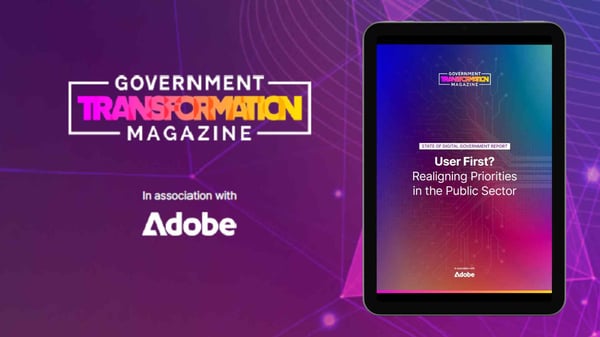Why citizens expect digital-first public services
The new Adobe/Government Transformation research report - State of Digital Government - assesses the progress being made in UK public services in adopting more user-centric design. Here, Bev Wright - Head of UKI Public Sector, Digital Experience for Adobe - explains the key themes that emerged in the research.
The report captures the insights of 250 UK government IT decision-makers, working at manager and director level, and provides valuable insights into government DDAT priorities in 2024. .jpg?width=350&height=197&name=State%20of%20Govt%20social%20(1).jpg) In it, we learn high-maintenance technology and paper-based processes are still barriers to public sector transformation and that while user-centred design is now the top priority for a third of decision-makers there is a need for a strategic pivot to reducing operational inefficiencies and freeing-up budget and resource to improve citizen experience.
In it, we learn high-maintenance technology and paper-based processes are still barriers to public sector transformation and that while user-centred design is now the top priority for a third of decision-makers there is a need for a strategic pivot to reducing operational inefficiencies and freeing-up budget and resource to improve citizen experience.
The pandemic rewired the vast majority of consumers to be digital first and, four years on, people expect their interactions with government services to be on a par with those they have every day with their banks, travel and media companies. That means being able to carry out tasks on the channel and device that suits them, at the time that works for them, receiving status updates and being able track progress on open items, and doing this through experiences.
These are citizen and customer experiences that not only recognise the person, but are tailored to their needs, understand their customer history, help them accomplish whatever it is they’re trying to achieve and respect privacy. And, in the public sector, these experiences must not exclude the vulnerable, or exacerbate existing inequalities. No small task.
To achieve this, government DDAT professionals will need to prioritise data and data governance and encouragingly, we find this is now the top priority at Director level. But while data is essential and tells government IT decision-makers what is happening, it can’t say why. Unpacking this and going beyond digitising existing offline processes to putting people at the heart of service delivery requires qualitative, ethnographic research and design thinking.
The process by which digital product teams really understand people, their needs, the problem they’re going to solve and then design concepts, which they prototype and test over and over again, whilst getting real user feedback in controlled environments.
These are services central to peoples’ lives and, so often, the support and care for the most vulnerable and most in need.
It’s a journey Adobe as a company has itself been on, as our business has moved from selling copies of physical software products to a cloud-based software as a service business. Our mission is to change the world through digital experiences and we believe that world class digital experiences can have greater impact in the public sector than they can anywhere else.
Nowhere else is the provision of services more important: these are services central to peoples’ lives and, so often, the support and care for the most vulnerable and most in need.
Download your copy of the full research report by clicking the banner below.





-1.jpg?width=600&name=Untitled%20design%20(7)-1.jpg)
